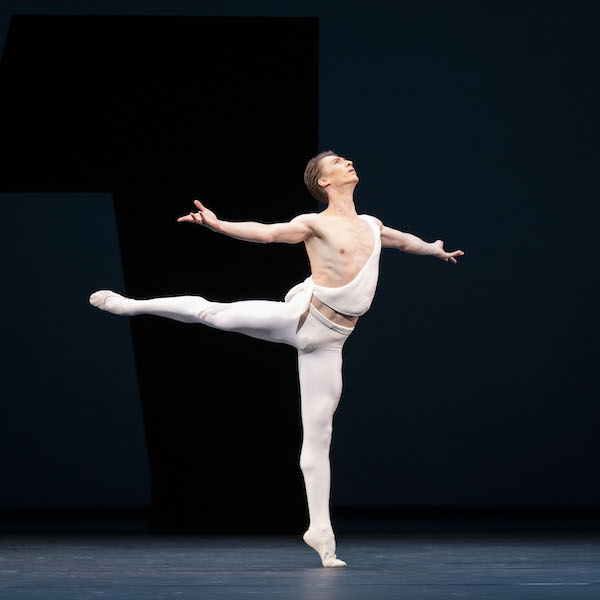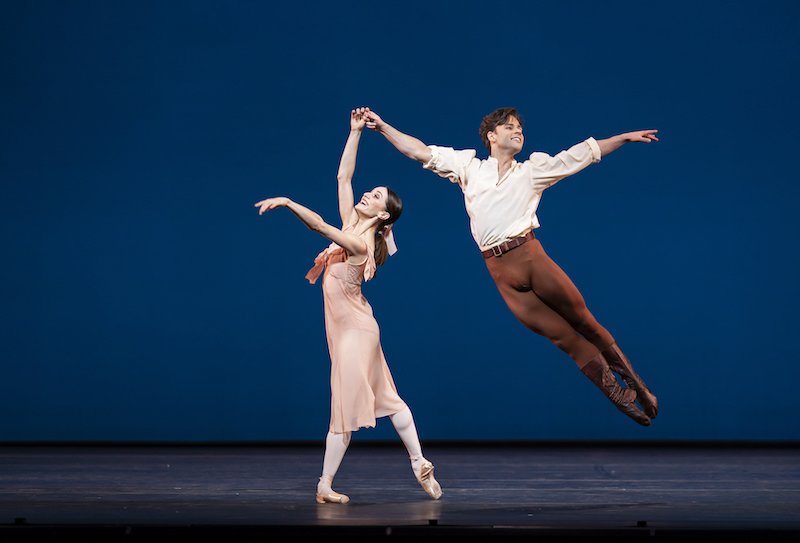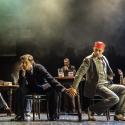People often ask why it is that in ballet there are different casts on different nights, a practice alien to opera, musicals and theatre. The most obvious reason is practical. Ballet companies keep a number of principal dancers on salary who need regularly to strut their stuff. Another reason is that dancers develop distinct individual qualities – technical, musical and dramatic – which imprint on the works they dance. Add to that the mysterious chemistry of partnering, the capacity of one dancer to bring out the best in another, and you begin to understand why hardcore balletomanes beggar themselves to buy tickets for several casts in a run. Argument over their relative merits fills ballet chatrooms.
Apollo, the 30-minute work that first united the talents of Igor Stravinsky and George Balanchine in 1928, lives or dies by the casting of its male lead. I must have seen this ballet at least two dozen times over as many years, and yet I felt I was only fully seeing it for the first time when Vadim Muntagirov (pictured below) made his debut in the title role on Friday with the Royal Ballet.
 Apollo is a landmark role, as challenging as they come, yet there are no high jumps or speedy turns. Stravinsky’s music for string orchestra is startlingly austere, and Balanchine minted a startling movement style to match it. There are hints of ancient Greek sculpture; graphic images of the sun, horses, sea swimming; a motif from Michelangelo’s Sistine Chapel ceiling, and a whole section without a single familiar ballet step.
Apollo is a landmark role, as challenging as they come, yet there are no high jumps or speedy turns. Stravinsky’s music for string orchestra is startlingly austere, and Balanchine minted a startling movement style to match it. There are hints of ancient Greek sculpture; graphic images of the sun, horses, sea swimming; a motif from Michelangelo’s Sistine Chapel ceiling, and a whole section without a single familiar ballet step.
Such story as there is tells how Apollo, god of the arts and music, is born, then educated by the Muses, and eventually gains the maturity to lead them to Mount Parnassus. Each of the three muses performs a solo by way of inducting Apollo into her artform. Calliope, the Muse of Heroic Poetry, dances to the metrics of the alexandrine, and at each caesura she mimes scribbling on a scroll. Polyhymnia, the muse of Mime, dances with a finger pressed to her lips. But grumpy teenager Apollo is not having any of it. This being ballet, it’s left to Terpsichore, the muse of Dance, to win him over. There’s a wonderfully tender moment near the end of her solo when, the music stilled, he rests his cheek in her cupped hands and you know he’s hooked.
What Muntagirov brings to the role is not just the kind of physique that holds up in white tights and little else, but also the dramatic ability to lead us through Apollo’s life stages, from swaddled baby to tearaway youth to resplendent god. Mikhail Baryshnikov’s performance is held as one of the greats (and it’s easy enough to check this out), but for me, Muntagirov finds at least as much nuance in his boyishness, and later his inner turmoil and pent-up power. Plus his height gives extra radiance to the signature pose (main picture) in which his limbs combine with those of the muses to suggest sunbeams.
That radiance is due too, of course, to precision work from the women. Anna Rose O’Sullivan and Mayara Magri are to be promoted to principal next season, and both are already acquiring the subtle glints of poise and glamour that come with that status. Meanwhile Yasmine Naghdi, already an important jewel in the Royal Ballet’s crown, makes a superb Terpsichore – serene and wise.
 A similar profusion of dance invention marks out the other works on the programme. Dances at a Gathering, made in 1969 by Broadway crossover king Jerome Robbins, at first seems largely conventional in its duets, trios and ensembles set to a string of Chopin piano pieces (one of the duets, pictured left). But once the ins and outs of friendship rather than romantic love come into focus, Robbins’ deft control of these fluctuating relationships holds us rapt for a full hour.
A similar profusion of dance invention marks out the other works on the programme. Dances at a Gathering, made in 1969 by Broadway crossover king Jerome Robbins, at first seems largely conventional in its duets, trios and ensembles set to a string of Chopin piano pieces (one of the duets, pictured left). But once the ins and outs of friendship rather than romantic love come into focus, Robbins’ deft control of these fluctuating relationships holds us rapt for a full hour.
In 1953 a long-lost musical score turned up in the Bolshoi Theatre archives. The piece turned out to be a supplementary pas de deux for Swan Lake, composed by Tchaikovsky but unused. Balanchine later re-purposed the score in a classical showcase for two principals at New York City Ballet, and this has in turn become a go-to for the Royal. Opening night fielded Natalia Osipova in the ballerina role, in bold contrast to the work’s original exponent, the small and delicate Violette Verdy. Osipova is the kind of woman who could make toast just by looking at a slice of bread, and here every supported pirouette prompts a show of fiery temperament. You wonder how her handler Reece Clarke keeps his cool. Yet in her variations she shows us another side, a thistledown lightness and quickness that, frankly, defies the visual evidence of her frame. The fireworks culminate in two head-first leaps into fishdive which drew gasps from the slightly less than half-full distanced house. It’s just as well there was no official ban on cheering.














Add comment